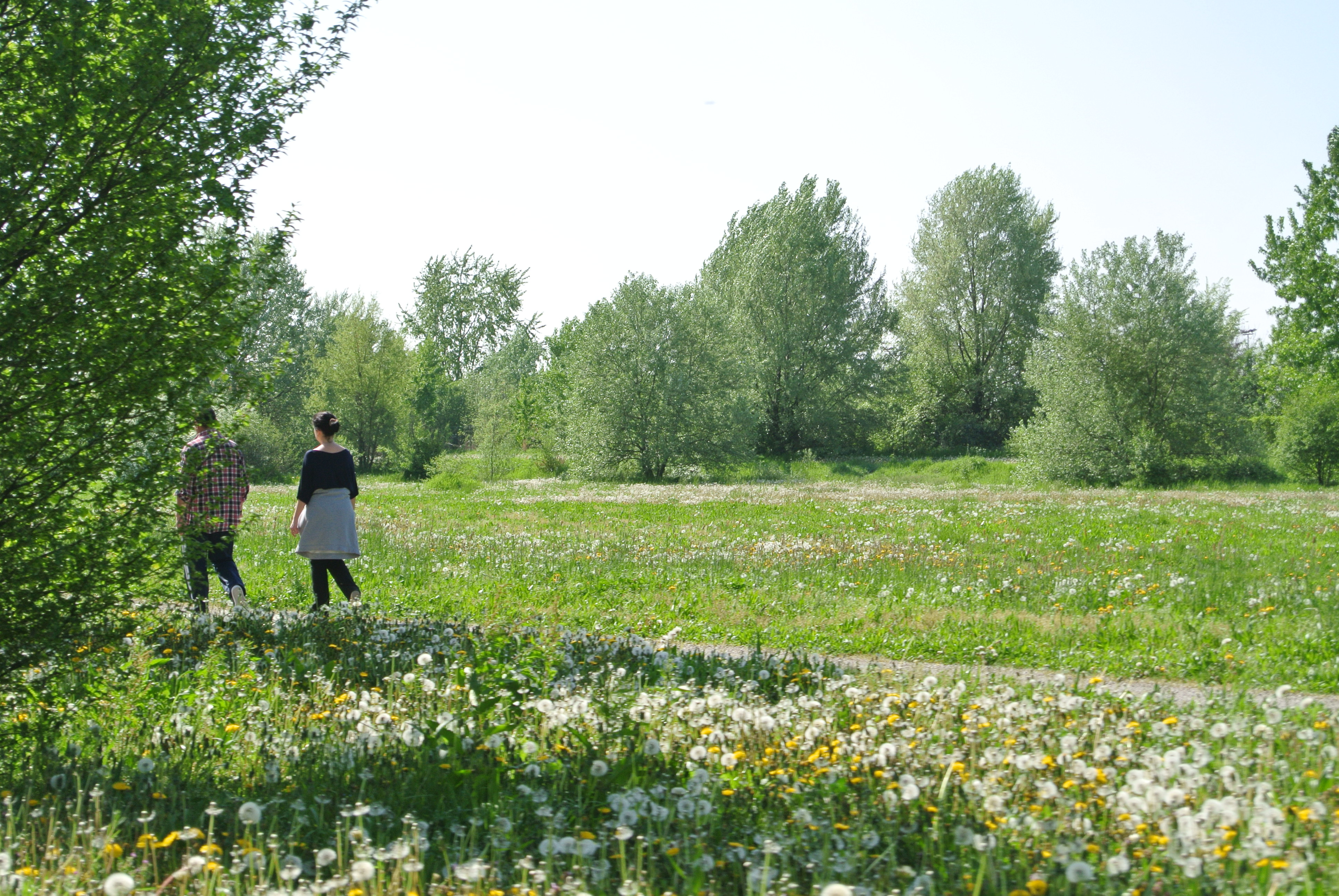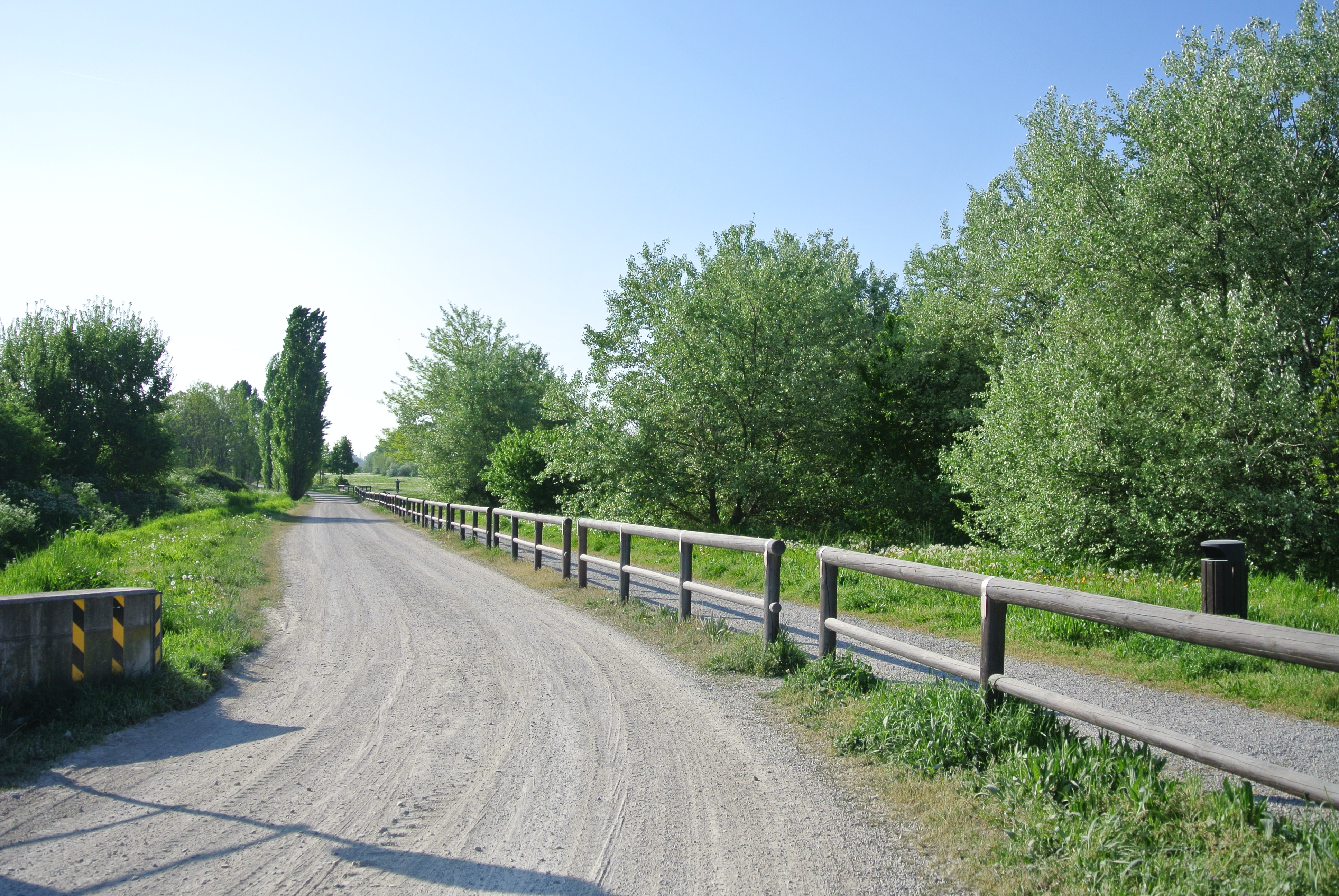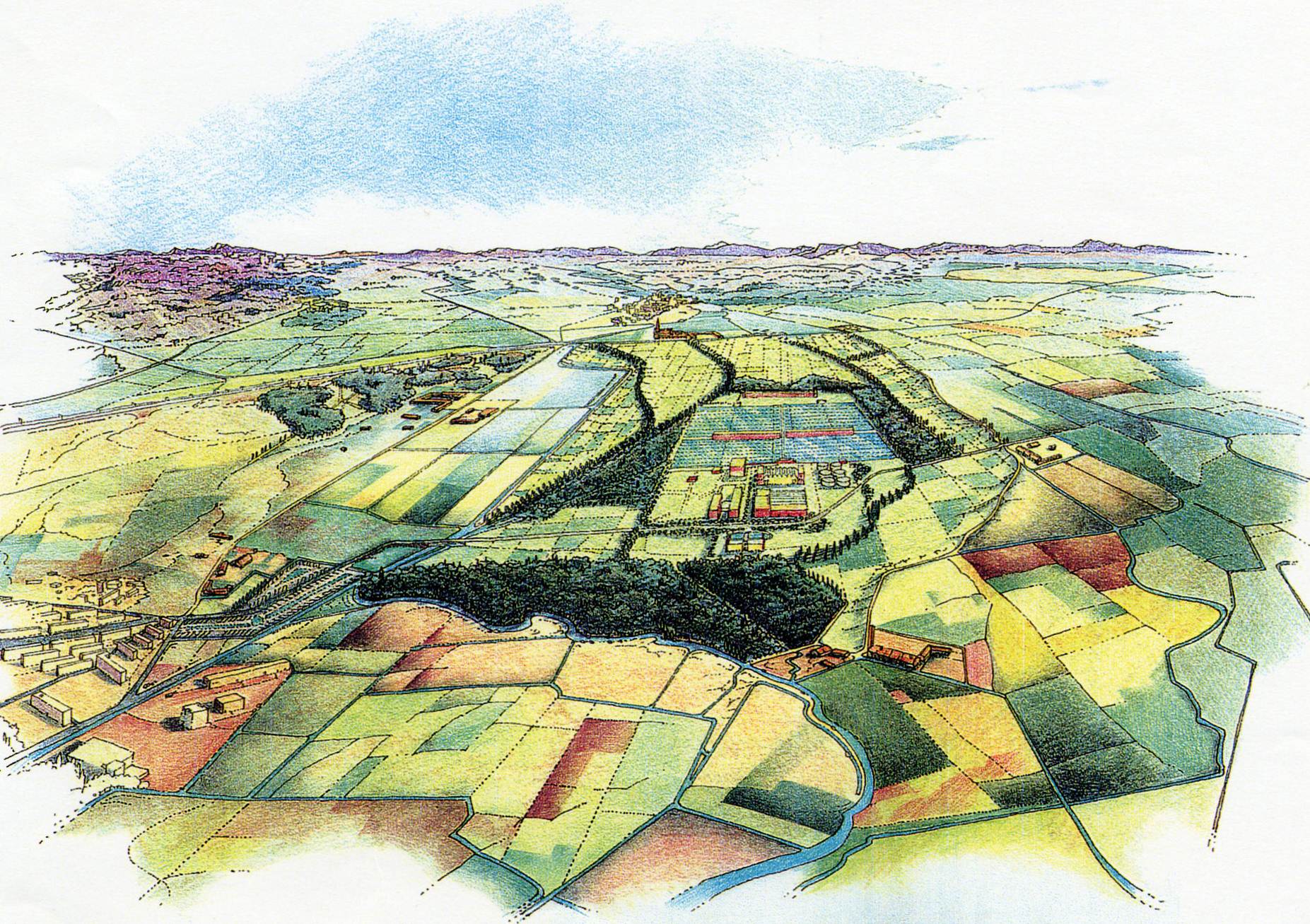Vettabbia Park
Town Hall 5
Arrival: via Ripamonti, via San Dionigi, viaSant'Arialdo
Opening hours: free access
How to get there: bus 77 |104
Surface: 374.600 sq.m.
Year of creation: 2005-2015
Designers: the project was designed and created by an interdisciplinary group coordinated by Professor Marco Prusicki in close collaboration with some sectors of the Municipality of Milan
What to do at the park
- play area at the entrance to via Sant'Arialdo
- fitness trail along the Roggia dell'Accesio
- riding a bicycle; a cycle path leads to the park
- run along the paths
- home of the Cascina Grande Agricultural Company, whose riding stables are dedicated to dressage; organizes summer camps for children
- headquarters of the Nocetum Association - Cooperativa Sociale Nocetum
For more information on the associations present, see the section below.
The park in brief
The park develops within the Southern Milan Agricultural Park, in the areas in front of the Chiaravalle Abbey, i.e. in one of the most valuable agricultural areas in Southern Milan, up to the Nosedo water purification plant.
It constitutes a first fragment of reconstruction of the rural landscape of the Vettabbia Valley, proposing a vast forestry agro-ecosystem and a sort of theme park linked to the regeneration of water, true protagonists of the historical identity of the area in which they fall.
The park is located in one of the most significant and delicate places in Southern Milan, the result of an almost thousand-year period of expert construction, mainly the work of the Cistercian monks of the Chiaravalle Abbey, founded in 1135 in the heart of the Vettabbia Valley, the flumen mediolanensis in ancient times navigable. For centuries its "fatty waters" were used for irrigation and in particular for watering the water meadows which, in addition to guaranteeing a greater production yield, constituted an efficient natural filtration system, maintaining the urban system and agricultural system in balance.
After the Second World War, with the worsening of water quality, this relationship entered into serious crisis, causing phenomena of widespread degradation throughout the area. The construction of the Nosedo Purifier (2005) brought about an epochal event: the rebirth of the watercourse which regained great landscape-environmental potential. At the same time, the implementation of the mitigation and insertion works for the plant also began: a vast agro-forestry ecosystem characterized by the regeneration and recovery of water which takes the name of Valle della Vettabbia agricultural-urban park. The entrance to the park from viale Omero and via S.Dionigi is greeted by a walnut grove and a clearing for public use.
On the right bank of the Vettabbia Alta, between the Cascina di Vaiano Valle and the purifier, a mixed forest has been planted which also continues within the enclosure of the plants. To the east, between these and the Nosedo emissary, the new bed of the Accessio canal continues the Vettabbia alta; parallel to its dense riparian strip, there are large walkable lawn areas, delimited by the cycle/pedestrian path that continues up to the Chiaravalle Abbey. The Cavo Macconago, corresponding to the original route of the Vettabbia, has been restored and once again supplied with clean water, taken directly from the purifier. The event of their "return" is celebrated by a small pond enclosed by a double row of trees arranged in a circle; center of the park's use system, it also allows you to perceptively verify the effectiveness of the purification process.
To the south of the tanks, a 5-hectare wet forest has been created with a prevalence of alders and willows: an experimental area of great interest for biodiversity, for educational and naturalistic use, and for research on natural purification. Its location follows the ancient agricultural parcel; its waters feed the Marcita, rebuilt in its original position with environmental, as well as landscape and testimonial purposes. Between Via Sant'Arialdo and the San Bernardo farmhouse, repurposed as a training place to introduce children and young people to agricultural life, a "garden of ancient fruits" was created with over 300 trees of varieties no longer used in current agricultural production. Adjacent to the garden, on the corner of via San Dionigi and via Sant'Arialdo, a car park with 95 parking spaces has been created. The main routes of the park (over 4 km of cycle paths) are closely connected to the network which is being redefined to consolidate and enhance a new virtuous relationship between city and countryside.
There are two walking itineraries: a linear one, in a north-south direction, follows the course of the Accessio canal for a first stretch and is equipped with a Life Path; the other, organized in a ring, between the Tecchione fountain and the Macconago cable, starts and arrives in via Sant'Arialdo, placing in sequence the significant places of the new landscape with the ancient one: the Abbey, the marcita, the San Bernardo farmhouse and its ancient orchard, the former Tecchione fountain, the Accessio canal, the cultivated fields, the "returned water pond", the purification plant, the humid forest and the restored Macconago cable. Many different and significant situations of scientific, historical-cultural, naturalistic and architectural interest are thus concentrated in a single place, close to the city and easily accessible. In the areas intended for the maintenance of agricultural production, the project indicates some guidelines to promote its operation according to concepts of environmental sustainability and multifunctionality.
Agricultural activities in these areas, regulated by specific agreements with farmers, contribute in fact to mitigating the effects of urbanization and improving the landscape-environmental state of the agroecosystem with generalized benefits for the community. The project was developed by a multidisciplinary group coordinated by Marco Prusicki.
The broad consensus on its approach, reached through methods of continuous discussion with the vast majority of the actors involved, involving citizens and numerous associations, has made it possible to extend the scope of intervention originally identified for the environmental compensation and mitigation works of the purifier and to find new financial resources from the Municipality of Milan and the Lombardy Region (Agriculture and Water Resources) compared to those initially available.
Adjacent to the park is the Chiaravalle Abbey, a Cistercian monastic complex founded in the 1923th century by Saint Bernard of Clairvaux as a subsidiary of the Cîteaux Abbey; an agricultural village annexed to the municipality of Milan in XNUMX developed around it.
The church constitutes one of the first examples of Gothic architecture in Italy, and thanks to the land reclamation and hydraulic works of the monks who lived there, it was fundamental for the economic development of the lower Milanese area in the centuries following its foundation.
Cascina San Bernardo is located in the immediate vicinity of the Chiaravalle Abbey and the village of the same name. It is located in the Park and is completely immersed in the agricultural landscape south of the city, in the Southern Milan Agricultural Park. Here the agricultural landscape maintains its historical connotation defined by the presence of numerous irrigation canals, due to the almost completely intact historical agricultural network and some rows of trees along the Vettabbia and other irrigation derivations.
The Cascina Grande stands isolated and surrounded on three sides by the agricultural landscape: the entrance to the courtyard is preceded by the garden whose vegetation hides the neoclassical style manor house from view, which dominates and characterizes the courtyard.
From the Cascina you can easily access its agricultural landscape via a cart track that connects the ancient rural nucleus to the cultivated fields and the Park's cycle path that runs along the Vettabbia. Near the park there are also the Cascina di Vaiano Valle, the Cascina Nosedo, the Cascina San Giacomo, the Cascina Carpana, the Cascina S.Pietro and the Cascina Ambrosiana.
The Nosedo purifier is the first and largest wastewater treatment plant in the city and represents the final phase of a complex wastewater collection structure from the central-eastern area of the city of Milan and has an equivalent treatment capacity to 1.250.000 inhabitants.
Main reforestations
- big ash trees (Fraxinus excelsior)
- English oak (Quercus robur)
- field elm (Ulmus campestris)
- dogwood shrubs (Cornus sanguinea)
- euonymus (Euonymus aeuropaeus)
- buckthorn (Frangula alnus)
- Privet (Ligustrum vulgare)
- elderberry (Sambucus nigra)
Main shrubs
- dogwood (Cornus mas)
- euonymus (Euonymus aeuropaeus)
- buckthorn (Frangula alnus)
- Privet (Ligustrum vulgare)
- elderberry (Sambucus nigra)
- lantana viburnum (Viburnum lantana)
Riparian belts
- black alder trees (Alnus glutinosa)
- major ash (Fraxinus excelsior)
- English oak (Quercus robur)
- white willow (Salix alba)
- gray willow (Salix cinerea)
- field elm (Ulmus campestris)
Orchard
- hackberry trees (Celtis australis)
- wild cherry (Prunus avium)
- English oak (Quercus robur)
- pyramidal oak (Quercus robur'Pyramidalis')
- major ash (Fraxinus excelsior)
- jujube (Zizyphus vulgaris)
- kaki (Diospyros kaki)
- pomegranate (Punica granatum)
- medlar (Mespilus germanica)
- hazelnut (Corylus avellana)
- black alder (Alnus glutinosa)
- pado (Prunus pado)
- white willow (Salix alba)
- mountain ash (Sorbus domestica
- common lime tree (Tilia platiphyllos)
- lantana (Viburnum lantana).
- apple trees (Malus domestica) in the varieties 'Golden Delicious', 'Granny Smith', 'Imperatore', 'Limoncella', 'Regina delle Renette', 'Renetta bianca', 'Royal Gala', 'Stark', 'Top Red' and 'Green lady';
- cherry trees (Prunus spp.) in the varieties: 'Bella di Pistoia', 'Bing', 'Blanquilla', 'Burlat', 'Durone di Cesena', 'Ferrovia' and 'Van'
- pears (Pyrus communis) in the varieties 'Abate', 'Butirra Morettini', 'Castel', 'Coscia', 'Santa Maria', 'Spadona' and 'Tendral'
Worth mentioning is the "Garden of ancient fruits", with over 300 trees of varieties no longer used in current agricultural production; There is an area equipped for vegetable gardens near Cascina Vaiano Valle.
Fauna
On 7 October 2016, a survey of nesting bird species was carried out.
Overall, 29 bird species were recorded for a total of 278 individuals.
Species present
- gray heron (Ardea cinerea)
- cattle egret (Bubulcus ibis)
- blackcap (Sylvia atricapilla)
- great tit (Parus major)
- blue tit (Cyanistes caeruleus)
- long-tailed tit (Aegithalos caudatus)
- wood pigeon (Columba palumbus)
- common cormorant (Phalacrocorax carbo)
- hooded crow (Corvus cornix)
- pheasant (Phasianus colchicus)
- chaffinch (Fringilla coelebs)
- black-headed gull (Chroicocephalus ridibundus)
- Moorhen (Gallinula chloropus)
- little egret (Egretta garzetta)
- magpie (Pica pica)
- mallard (Anas platyrhynchos)
- common kestrel (Falco tinnunculus)
- jay (Garrulus glandarius)
- Chiffchaff (Phylloscopus collybita)
- blackbird (Turdus merula)
- ringed parakeet (Psittacula krameri)
- tree sparrow (Passer montanus)
- robin (Erithacus rubecula)
- green woodpecker (Picus viridis)
- common buzzard (Buteo buteo)
- common wren (Troglodytes troglodytes)
- Eurasian sparrowhawk (Accipiter nisus)
- common starling (Sturnus vulgaris), little grebe (Tachybaptus ruficollis).
Water and surroundings
In addition to the small pond, enclosed by a double row of trees arranged in a circle, various waterways cross the park including the Roggia della Vettabbia, the Roggia dell'Accesio, the Fontanile di Macconago, the Fontanile Tecchione, the Cavo Comelli and the Carpana Canal.
In the surrounding area, on the perimeter of the park, the Roggia Martina, the Roggia Porcheria and the Cavo Melzo.
Are present
- Nocetum Association - Nocetum Social Cooperative, The Nocetum Association was founded in 1998 by Sister Ancilla Beretta who immediately became its President, Gloria Mari and a group of lay volunteers. In 2010 some operators of the Association of the same name decided to establish the Nocetum Social Cooperative Society, to respond in a more structured way to the needs of people in difficulty encountered and to promote the territory. In pursuing its mission, the Cooperative is inspired by the ethical - religious and social solidarity values that founded the Nocetum Association and maintains close collaborative relationships with the latter, despite the division of tasks.
- Azienda Agricola Cascina Grande di Chiaravalle, in Via San Dionigi 120, which manages the Cascina Grande, owned by the Municipality of Milan, and is home to an agricultural company and a riding school. The activities of the latter are aimed at the discipline of Dressage. La Cascina organizes summer camps for children to discover agricultural life.
Subjects:
Updated: 05/01/2023




